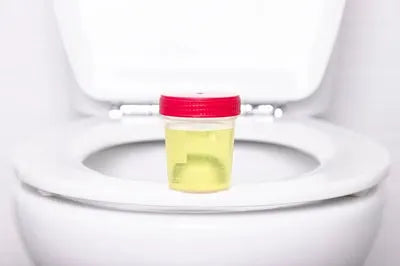You stand in the bathroom, waiting for something that should happen naturally, but it doesn’t. You feel the urge to urinate, but when you try, the flow is weak, slow, or sometimes doesn’t start at all. It’s frustrating, confusing, and maybe even a little worrying.
You might wonder, “Why is this happening to me?” or “Is it something serious?” But before your thoughts start running wild, here’s what you need to know: you’re not alone, and this isn’t your fault.
Urinary hesitancy in women is far more common than most people realise, and it can be managed once you understand what’s causing it.
So, let’s talk about it, calmly and openly. Because your body deserves understanding, not judgment.
What Is Urinary Hesitancy In Women?
Urinary hesitancy means having trouble starting the flow of urine, even when your bladder feels full. Sometimes, it also means your flow is weak, stops and starts, or takes a long time to finish.
While this issue is often associated with men (especially older men with prostate problems), many women experience it too, but for very different reasons.
For most women, the problem starts with how the bladder muscles, pelvic floor, or urinary tract respond when you try to urinate. If something interrupts this process, whether it’s a physical blockage, muscle tension, or nerve signal issue, urination becomes difficult or incomplete.
Common Causes of Urinary Hesitancy in Women
There’s no single cause. Sometimes it’s temporary, and other times it’s linked to an underlying health condition. Let’s look at some of the most common reasons:
1. Urinary Tract Infections (UTIs)
A UTI can make your bladder lining inflamed and sensitive. When that happens, the bladder muscles struggle to relax, making it hard to start urination even when you feel the urge. You may also experience burning, discomfort, or a constant feeling of needing to go.
2. Pelvic Floor Muscle Tension
Your pelvic floor muscles play a key role in controlling urine flow. When they’re too tight or weak, they can stop urine from passing easily. This often happens due to stress, anxiety, childbirth, or long-term habits like holding in urine.
3. Nerve or Spinal Problems
Sometimes, the nerves that send messages between your bladder and brain don’t work properly. Conditions like diabetes, multiple sclerosis, or spinal injuries can affect these signals, leading to hesitancy or incomplete emptying.
4. Side Effects of Medication
Certain medicines, especially those for allergies, depression, or high blood pressure, can slow bladder contractions. If you’ve started a new medication and noticed difficulty urinating, it’s worth mentioning to your doctor.
5. Bladder or Urethral Obstruction
Though less common in women, any narrowing or blockage in the urinary tract (such as from kidney stones or scar tissue) can make urine flow weak or delayed.
If urinary hesitancy happens once or twice, it might not mean anything serious. But if it’s frequent, painful, or affecting your daily life, it’s time to seek medical advice.
Here are some urinary hesitancy symptoms to look out for:
-
You have burning or pain while urinating.
-
Your bladder still feels full after you go.
-
There’s blood in your urine.
-
You’re urinating much less than usual.
-
You feel pressure or pain in your lower abdomen.
Getting checked early helps your doctor identify the root cause and prevent complications like bladder infections or kidney strain.
Treatment Options For Urinary Hesitancy in Women
Infographic Suggestion
Gentle Ways to Manage Urinary Hesitancy in Women
|
Tip |
What to Do |
|
🧘♀️ Pelvic Floor Relaxation |
Practise gentle Kegel exercises daily–not just tightening, but learning to relax those muscles too. |
|
💧 Balanced Hydration |
Sip water throughout the day rather than drinking large amounts at once. |
|
💊 Review Medications |
Some allergy, anxiety, or BP medicines can slow urine flow. Talk to your doctor if symptoms begin after starting a new prescription. |
|
🌿 Mind–Body Calm |
Stress and anxiety can tighten pelvic muscles and delay urination. Deep breathing, yoga, or mindfulness can ease tension and improve urine flow naturally. |
|
🚫 Limit Bladder Irritants |
Reduce caffeine, alcohol, and spicy foods. These can irritate the bladder and worsen hesitancy. |
|
🪞 Don’t Rush the Process |
Sit comfortably, breathe deeply, and give your body time to respond. Forcing urination can increase strain on the bladder and pelvic floor. |
Urinary hesitancy treatment depends on what’s causing your symptoms. But the goal is always the same: to help you urinate comfortably and confidently again.
1. Treating the Underlying Cause
If a UTI is responsible, antibiotics usually clear it up quickly. If a medication is causing the issue, your doctor may suggest adjusting the dose or switching to another drug.
2. Pelvic Floor Therapy
A physiotherapist can teach you exercises that relax or strengthen your pelvic muscles. This can make a big difference if muscle tension or weakness is behind your hesitancy.
3. Bladder Training
Timed voiding or bladder training helps retrain your bladder to release urine more effectively. It’s a slow process but helps reduce both hesitancy and urgency over time.
4. Medications for Nerve or Muscle Control
In some cases, medicines that help relax bladder muscles or improve nerve communication may be prescribed.
5. Lifestyle and Self-Care Support
- Drink plenty of water throughout the day.
- Don’t hold your urine for long periods.
- Avoid caffeine and alcohol, which can irritate the bladder.
- Use gentle hygiene practices to prevent infection.
Your body is changing, and there’s no shame in that. Difficulty urinating or post-void dribbling doesn’t mean you’re weak; it simply means your body needs a little extra care. Post-void dribbling happens when a small amount of urine leaks out even after you think you’ve finished urinating. This can occur because your bladder doesn’t empty completely or the pelvic muscles don’t tighten enough to stop the flow entirely.
When that leftover urine escapes later—maybe when you stand up, cough, or move suddenly—it can be uncomfortable and embarrassing. That’s where Friends Diapers come in. They’re designed to keep you protected and confident when small leaks catch you off guard. Whether it’s the Overnight Diaper Pants for nighttime assurance or Premium Adult Diaper Dry Pants for all-day freshness, Friends is here to help you continue living life to the fullest with comfort and confidence.
Also Read : Urinary Retention in Women: Causes, Symptoms & Treatment
Conclusion
Urinary hesitancy might seem like a small issue, but it can quietly affect your comfort, confidence, and peace of mind. The good news is: it’s manageable, treatable, and in most cases, temporary.
So, if your body is telling you that something feels “off,” listen to it. With the right guidance, gentle care, and the reassurance of Friends, your body can regain its rhythm, and so can you.
Product Recommendations
Frequently Asked Questions
Is urinary hesitancy common in women?
Yes, it’s more common than most women realise. It can happen due to infections, pelvic floor tension, or certain medications.
Can stress or anxiety cause urinary hesitancy?
Absolutely. Stress can tighten your pelvic muscles and affect the nerve signals that control urination. Relaxation exercises can often help.
Does urinary hesitancy mean kidney disease?
Not always. While persistent hesitancy can affect kidney function if ignored, it’s usually caused by bladder or muscle-related issues and easily manageable.
How can I prevent urinary hesitancy?
Stay hydrated, urinate when you feel the urge, and keep your pelvic floor strong with regular exercises.
Can adult diapers help with urinary problems?
Yes, they can offer comfort and protection while you manage your symptoms. Options like Friends Overnight Diaper Pants or Friends Premium Adult Diaper Dry Pants provide reliable support both day and night.





















